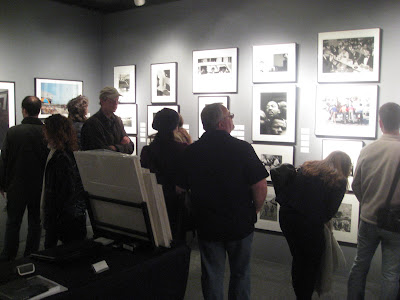Amnesty International has just released the 2012 report The State of the World's Human Rights.
A watershed year for activism
"2011 was a truly tumultuous year. Millions of people took to the streets to demand freedom, justice and dignity – some of them securing memorable victories.Successful uprisings in Tunisia and Egypt early in the year ignited protests across the region and then the world, stretching from Moscow, London and Athens in Europe, to Dakar and Kampala in Africa, to New York, La Paz and Cuernavaca in the Americas, to Phnom Penh and Tokyo in Asia.
In the Middle East and North Africa, the pent up grievances and demands of a rising generation exploded onto the streets, sweeping aside or threatening the survival of autocratic regimes that had ruled with iron fists for decades and had seemed invincible.
Inspired by these events, people elsewhere in Africa also risked reprisals by protesting against their desperate social and economic conditions and expressing their desire for political freedoms.
In Europe and Central Asia, as well as the Asia-Pacific region, people repeatedly challenged injustice and violations of their rights. In some cases, governments responded by stepping up already stifling levels of repression. The autocratic regimes in several of the successor states to the Soviet Union, for example, strengthened their grip on power by crushing protests, arresting opposition leaders and silencing dissenting voices.
The demand for human rights also resounded across the Americas – on the streets, in national courts, and in the Inter-American system. The calls for justice from individuals, civil society organizations and Indigenous Peoples gained strength, frequently bringing people into direct confrontation with powerful economic and political interests.
At the heart of many of these conflicts were economic development policies that left many, particularly those living in poverty and marginalized communities, at increased risk of abuse. Many forms of discrimination also continued to engender a sense of injustice that sparked and were reflected in protests around the globe.
All these events and trends are reflected in the Amnesty International Report 2012, which documents the state of human rights in 155 countries and territories in 2011 – the year that Amnesty International celebrated its 50th anniversary.
The report highlights the endemic failure of leadership at a local and international level to protect human rights. It shows that the response of the international community to human rights crises was often marked by fear, prevarication, opportunism and hypocrisy. Nowhere was this more apparent than in the Middle East and North Africa, with markedly different responses to government crackdowns on mass protests across the region.
The failure in leadership was also apparent as governments continued to exploit legitimate concerns over security or high crime rates to justify or to ignore abuses by their own security forces, and failed to hold business corporations to account for their impact on human rights.
As Amnesty International moves into its sixth decade, this report bears witness not only to the plight of those living in the shadow of human rights violations, but also to those who are inspired to take action, often at great personal risk, to secure human rights and dignity for all."
--Amnesty International
Related Exhibition - "People Get Ready" The Struggle For Human Rights"
Monroe Gallery of Photography
July 6 - September 23, 2012










